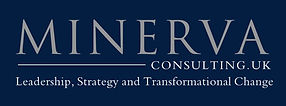
Team and Organization Effectiveness: Assessing The Conditions for Success
People often talk about creating the “conditions for success” without exploring what that really means. All experience and extensive research suggests that there are three fundamental pre-conditions that must be satisfied for any organization, team or individual to achieve success: Ability, Clarity, and Environment; and it is the Leader’s responsibility to shape, develop or create these conditions (but the leader does not need to (and can’t) provide all the leadership). ACE is a simple mnemonic for remembering this simple diagnostic concept and leader’s job description.

Ability
Ability is a function of knowledge and skill, applied with adaptable, appropriate and authentic behaviour and attitude (which, for leaders, you may call ‘flexible leadership style’ or ‘emotional intelligence’), together with the right level of intellectual horsepower for the level of work complexity. Leaders need to develop themselves and coach and develop their colleagues.
Clarity
Research shows that increasing ‘clarity’ makes the most rapid performance improvement; as our client stories demonstrate in practice. Clarity is a function of two factors: the right information and the effective understanding of that information to enable decisions and action that is aligned to the higher intent.
Clarity includes clear and common understanding of desired future-state, purpose, ‘higher intent’, plans, roles, objectives and priorities, role-relationships and so on. Purpose is especially important as it creates meaning, helps to set wider context, aids alignment of decision choices; and if it’s a worthwhile or ‘noble’ purpose, it is inspiring of itself.
Environment
Research shows that up to 70% of behaviour in organizations is shaped by environment. ‘Environment’ comprises the infrastructure of the work place —its systems and processes, organizational structure design, facilities, and its ‘ethos’ or approach to its business. The example of leaders and the climate created by a leader for his or her team through their behaviour is critical in leading change and performance improvement.
But what about things like motivation, communication and empowerment? We suggest that motivation, effective communication and empowerment have elements in all three ACE areas which is why simply telling people that they are empowered doesn’t work; and we’ll happily discuss why this is so with you.
ACE as a Team Performance (and Leadership effectiveness) diagnostic
For a long time scientists tried to measure the presence of quarks. Then they realised that that was simply too difficult, so they looked for evidence of the existence of quarks and satisfied themselves with measuring that. The same idea may be extended to assessing organizational, team and leadership effectiveness.

It is the responsibility of leaders at all levels to create the ACE conditions in which their people may be successful in achieving organizational objectives. When aggregated across the organization, the presence of these ACE conditions is 'Organizational Effectiveness' or 'Organizational Capability'. These conditions may be assessed for use as a performance improvement diagnostic.
While leadership cannot be 'measured' per se, the presence of the ACE conditions is evidence of leadership; so this powerful mechanism is also a measure of the organization’s quality of leadership and its leadership capacity as well as a means of highlighting areas for improvement work.
We can help you to assess your ACE conditions at team, department or organizational levels with digital mechanisms and tools as well as simple face to face and digital dialogue enablers. With some clients, this concept and tool starts leadership development programmes (all skills, knowledge and behavior development then addresses enhancing the ACE areas), and forms the basis of on-going team and departmental quarterly performance planning reviews.

To aid assessment the three ACE elements may each be broken into smaller component parts to enable detailed understanding and assessment of internal ACE conditions. Generic questions for each of these parts exist which assess both the importance of that element to the respondent, and the degree to which the respondent perceives that element to be present. Conducting an ACE audit with groups in 90 minute face to face or remote workshops, gives everyone an understanding of the concept, secures engagement and results in both quantitative and qualitative measures; the rich dialogue that pinpoints priorities for action.
The concept construct and the question areas may be tailored to individual organizational needs and supplemented with free text questions.
While analysis to individual question level is of value, experience shows that at organizational levels, traffic light maps of the organization are most useful in understanding the different ‘pictures’ in different locations and functional areas, and at different levels of leadership.
Talk to use about assessing the developing the ACE Conditions for Success, and creating your bespoke ACE Insights digital toolbox.